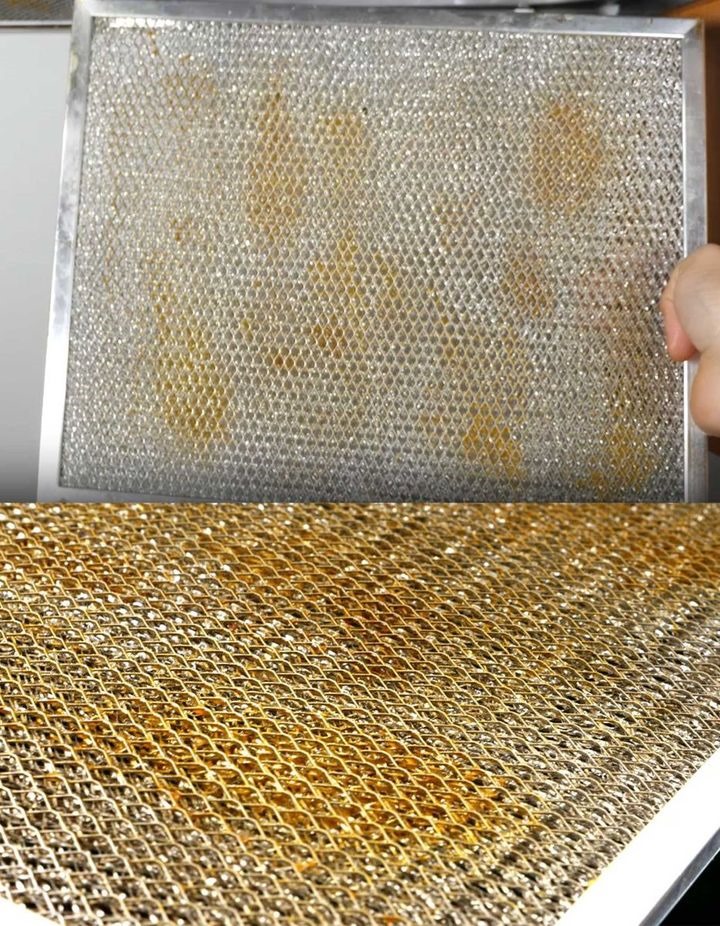ADVERTISEMENT
For Complete Cooking STEPS Please Head On Over To Next Page Or Open button (>) and don’t forget to SHARE with your Facebook friends
Fill your basin or sink with hot water, ensuring that it’s deep enough to fully submerge the filter. Add a few tablespoons of dish soap to the water and stir to create a soapy solution. Soak the filter for about 15 to 30 minutes, depending on the level of grease buildup. This will help loosen the grease and grime that has accumulated over time.
Step 3: Scrub the Filter
Once the filter has soaked and the grease has softened, it’s time to scrub! Put on rubber gloves (if desired) and use a scrub brush or an old toothbrush to gently scrub the surface of the filter. Focus on the greasy spots and areas with visible buildup, making sure to get into the crevices of the filter.
For tougher grease, sprinkle a little bit of baking soda directly onto the filter and scrub again. The baking soda will act as a mild abrasive to help lift stubborn dirt. Be sure to scrub both sides of the filter to ensure that every surface is cleaned.
Step 4: Rinse Thoroughly
Once the filter is scrubbed clean, rinse it thoroughly with hot water to remove any leftover soap, baking soda, or grease. Make sure there is no residue left behind, as it could affect the performance of the filter when you reinstall it.
Step 5: Deodorize with Vinegar (Optional)
If your filter still smells a little greasy or musty after cleaning, you can give it an extra deodorizing boost with white vinegar. Fill a spray bottle with vinegar and spray it lightly over the cleaned filter. Let it sit for 5-10 minutes to neutralize odors and sanitize the filter. Rinse with warm water afterward.
Step 6: Dry the Filter
After cleaning and rinsing, shake off any excess water from the filter and let it dry completely. It’s important to make sure the filter is dry before reinstalling it to avoid trapping moisture, which could lead to mold or mildew growth. You can either air dry it by laying it on a towel or wipe it down with a clean, dry cloth.
For Complete Cooking STEPS Please Head On Over To Next Page Or Open button (>) and don’t forget to SHARE with your Facebook friends
Step 7: Reinstall the Filter
Once the filter is completely dry, reinstall it into the oven hood. Ensure that it’s securely in place, and test the range hood to make sure it’s functioning properly. A clean filter will make a noticeable difference in how efficiently your range hood operates.
Tips for Maintaining a Clean Oven Hood Filter
While cleaning your oven hood filter every few months is important, there are a few simple things you can do to keep it cleaner for longer:
- Regular Maintenance: Wipe the filter down with a damp cloth or paper towel every couple of weeks to prevent grease buildup.
- Cook with a Lid: If you’re cooking foods that tend to splatter or release a lot of grease (like bacon or stir-fries), use a lid to reduce the amount of grease that escapes into the air.
- Ventilation: Use the oven hood fan whenever you’re cooking to help capture grease and smoke before they settle on your filter.
- Avoid Overuse: If your filter is only slightly greasy, you may not need to wash it every time. Just a quick wipe or rinse should do the trick between deeper cleanings.
Conclusion
A greasy, clogged oven hood filter doesn’t have to be a source of frustration. With a few simple steps, you can effortlessly restore your filter to its original clean and functional state. Regular cleaning will not only improve the efficiency of your range hood but also keep your kitchen smelling fresh and free of grease.
By following this easy DIY cleaning guide, you’ll ensure that your oven hood filter works as it should, keeping your kitchen air clean, safe, and pleasant. Get rid of the grease and enjoy a cleaner, healthier cooking environment today!
